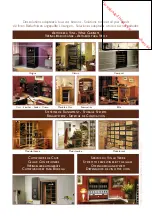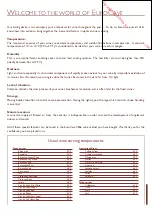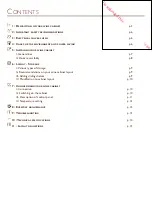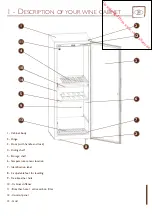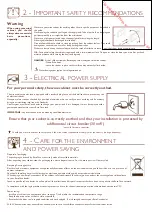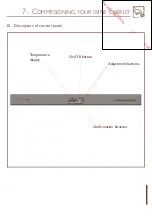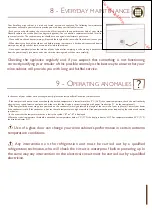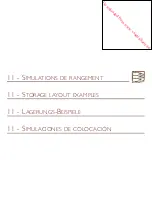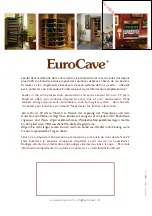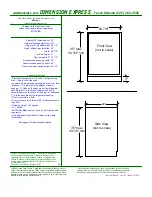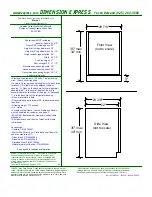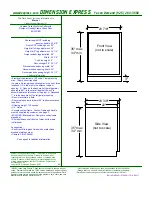
Downloaded from www.vandenborre.be
7
EN
5 - I
NSTALLING YOUR WINE CABINET
- When your appliance is delivered, ensure, after unpacking, that your cabinet shows no exterior appearance defects (impacts, buckling, etc.).
- Open the door and check the integrity of the inside of your appliance (walls, shelves, hinges, control strip, etc.).
- In the event of a problem, contact your EuroCave dealer.
- Now move your cabinet to its chosen location. This location should:
- be open to the exterior to enable air circulation (not a closed cupboard, etc.),
- be removed from any heat source,
- not be too damp (laundry room, utility, bathroom, etc.),
- have a solid and flat floor,
- have an electrical power supply (standard power socket, 16A, with earth and differential circuit breaker, 30 mA)*.
* not valid for some countries.
- Do not place your cabinet in an area that might be flooded.
- Avoid water splashes over all or part of the back of the appliance.
- Place the water recuperation tank on the compressor stand (you will find this in the “accessories” bag in your cabinet),
sliding it under the little outlet hose from the casing, with the deepest part of the tank under the hose.
- Ta ke the power lead, (which you will find in the “accessories” bag in your cabinet), and connect it to the connector at the
bottom left of the cabinet (see adjoining diagram).
- Release the power cable so that it is accessible and position your appliance, leaving a space of 8 to 10cm between the
wall and the rear of your wine cabinet.
- Release the power cable so that it does not enter into contact with any part of the appliance.
-
Wait 48 h
before plugging in, so that the internal circuit fluids can settle.
- gently tip cabinet backwards in order to adjust the front feet (by unscrewing or tightening), so as to achieve a level for
your cabinet (we recommend the use of a spirit level).
- Remove the protective elements inside your cabinet.
- Position the carbon filter, which you will find in the “accessories” bag, placing it inside the cabinet in the breather hole at the top left (see adjoining diagram).
- This wine cabinet is designed to be used as a free standing unit only.
- Never connect several wine cabinets to a multi-socket.
N.B.:Whenever moving your cabinet, never tip by more than 45°,
And always on the lateral face on the electrical lead side.
Did you know?
A wine cabinet has to be designed so that no bottle comes into contact with the back wall. If this were to
happen, the condensation on the wall could trickle over the shelves and damage the bottle labels. Incidentally,
contact with the cold wall could create a frost point, which would be harmful to your wine.
I - Generalities


